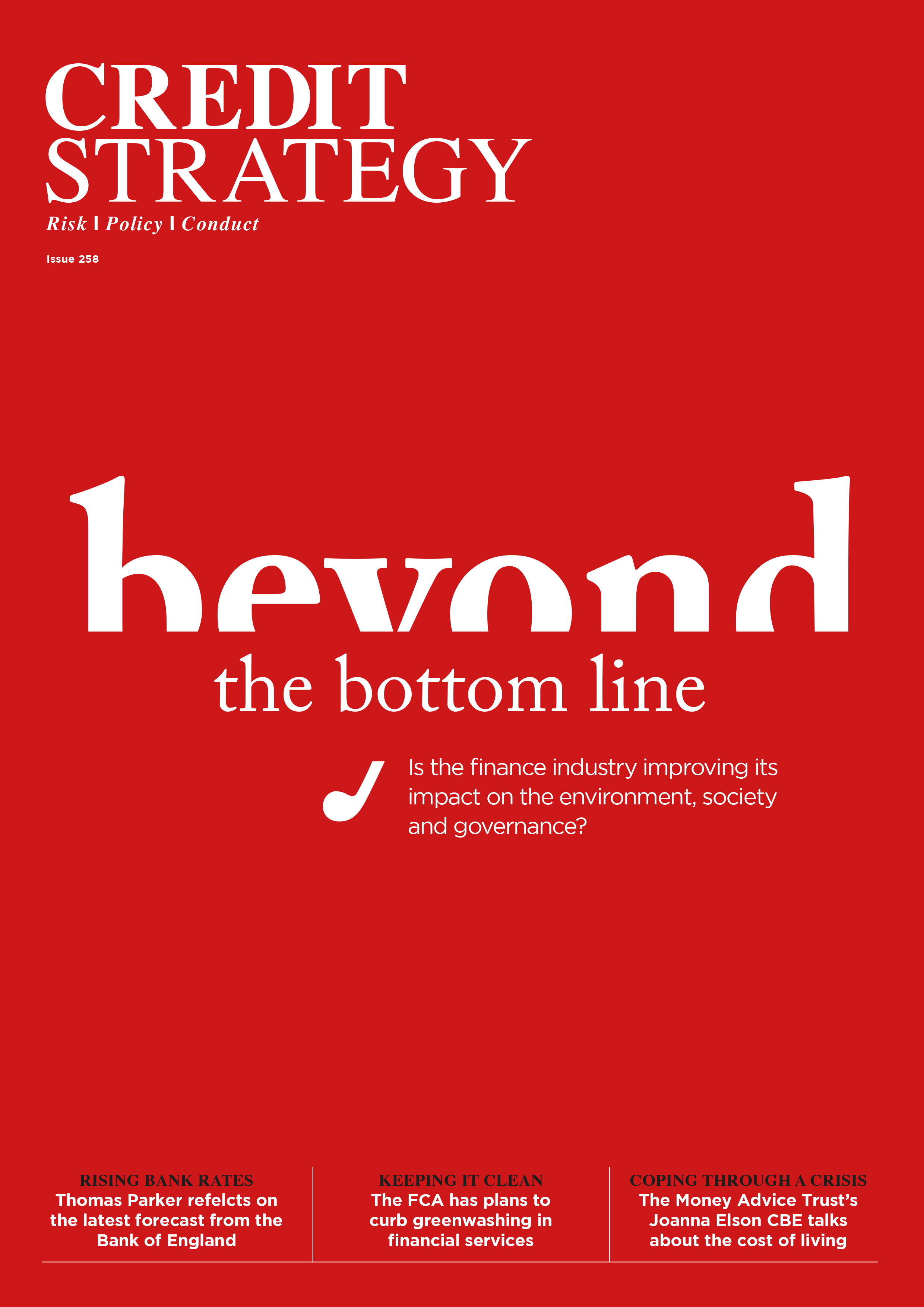Dear visitor,
You're reading 1 of your 3 free news articles this quarter
Register with us for free to get unlimited news, dedicated newsletters, and access to 5 exclusive Premium articles designed to help you stay in the know.
Join the UK's leading credit and lending community in less than 60 seconds.
Understanding the challenges and charting a path to financial inclusion
| PREMIUM |
In a recent interview with Credit Strategy, Steve Elliot from LexisNexis Risk Solutions discussed the findings of their Commissioner Report, which sheds light on the patterns of rising debt and default rates in the credit risk sector.

Group Editor of Shard Financial Media, which encompasses the Credit Strategy, Reward Strategy, TRI and FSE brands.
Elliot shares valuable insights into the challenges faced by individuals and the credit industry as a whole, highlighting the need for financial inclusion and innovative approaches to credit assessment.
Michal Lodej: So why did LexisNexis Risk Solutions undertake this report on the patterns of rising debt and default rates?
Steve Elliot: We want to use the power of our data to help solve problems in society. One of the problems we can see at the moment is the rising cost of living and also the challenges it creates for people in society today and one of the challenges or the consequences of that is around debt: the cost of debt, the scale of debt and the impact of debt on people. So, we wanted to understand that and what could be done to improve the ability of people to access fair and affordable credit, to improve their lifestyle at a time when society is going through a number of challenges.
ML: And how exactly was that report pulled together?
SE: It’s brought together using a whole range of our data assets. We’ve got lots of data assets across the market at the moment, and we’ve also got lots of contacts across the market. We can use both of these together to actually understand what’s going on in the market. First of all, we look at our data. We have incredibly strong identity assets, so we have profiles for probably 95% of the UK adult population. We can look at consumer debt and lending trends across those and how it’s impacting society. And we can also engage with people that we know across the industry and understand actually what changes they’re seeing in their customers’ behaviour. So we gather the record using both our assets and our contacts across the industry.
ML: What did the report reveal - in a nutshell?
SE: The report revealed a huge amount of interesting and useful insight that we can act on in order to drive improvements in society. One of the things it revealed is that we can see a lot more individuals applying for short-term high-cost loans to cover existing debts. They’re taking out more debt at a higher price, and the problem for them is going to get worse because they’re going to have to service that more expensive debt and probably have to take out more debt at an even higher price in order to service the high-priced debt that they’ve already taken. We’ve seen increases in short-term high-value loan applications of around 64%, which is concerning. Additionally, the removal of the energy price cap has coincided with an increase in county court judgments for smaller debts. This creates a structural problem in society that needs solving.
ML: What can the credit industry learn from this report?
SE: The credit industry can learn a lot. It needs to understand that consumers today have slightly different behaviours and needs compared to consumers of just a few years ago. One critical aspect for the market to address is financial inclusion. People are struggling to get affordable loans because the current credit assessments rely too much on historical data, which doesn’t reflect the current circumstances of individuals. By broadening the evaluation criteria to include comprehensive lifestyle data, spending habits, and social interactions, lenders can form a more accurate risk profile and offer credit at lower interest rates. This would significantly reduce financial exclusion, which affects around 7.1 million adults in the UK.
ML: Which groups are disproportionately affected by the current credit landscape, and how can lenders address their needs?
SE: There are a few groups that are particularly affected. Young adults and immigrants often have limited credit histories, making it challenging for them to access affordable credit. They’re penalized for not having a long credit history, which isn’t an accurate reflection of their creditworthiness. Additionally, individuals going through life events like divorce could face difficulties in establishing financial autonomy, as their historical financial arrangements may not reflect their true creditworthiness. By adopting predictive models that rely on comprehensive data, lenders can facilitate access to affordable credit for these marginalised groups and empower them to build a stable financial future.
ML: What are the next steps for lending institutions based on the findings of this report?
SE: Lending institutions need to embrace data-driven approaches to assess individuals’ future behaviour and repayment capacity. Relying solely on historical data is no longer sufficient to capture the nuances of an individual’s circumstances and potential. By leveraging advanced technologies and readily available data, lenders can unlock solutions to the financial exclusion crisis. Accurately predicting future risk will enable lenders to offer credit at fairer rates, reducing the burden of high-cost debt on individuals and minimising the societal impact of defaults and insolvency. It’s crucial to shift from outdated solutions to innovative approaches that promote financial inclusion and contribute to the well-being of society.
The Commissioner Report by LexisNexis provides valuable insights into the challenges of rising debt and default rates. By leveraging comprehensive data and adopting predictive models, lending institutions can provide affordable credit, reduce financial exclusion, and contribute to a more stable financial future for all. It is evident that the credit industry must embrace innovative solutions to address the urgent challenges highlighted in the report, which you can access here.
Stay up-to-date with the latest articles from the Credit Strategy team
Get the latest industry news






